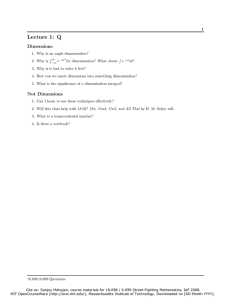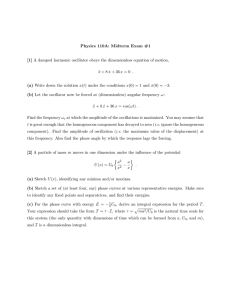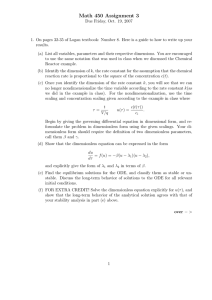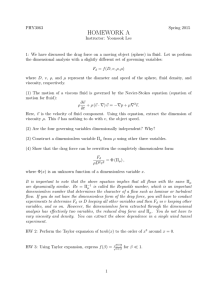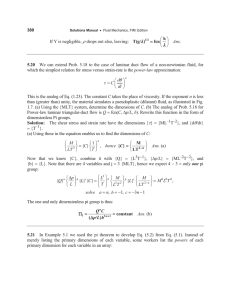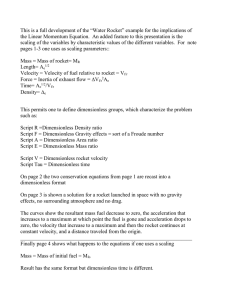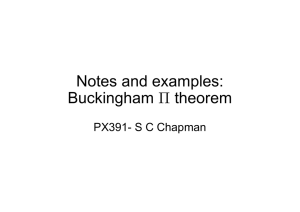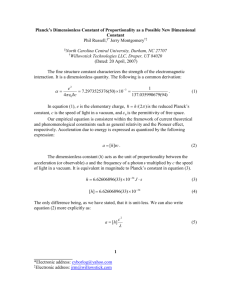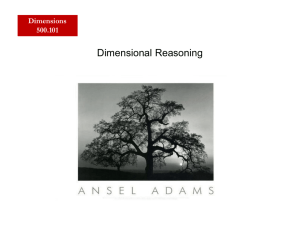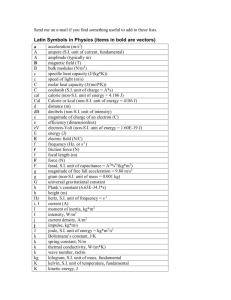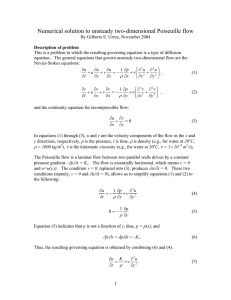Some examples
advertisement
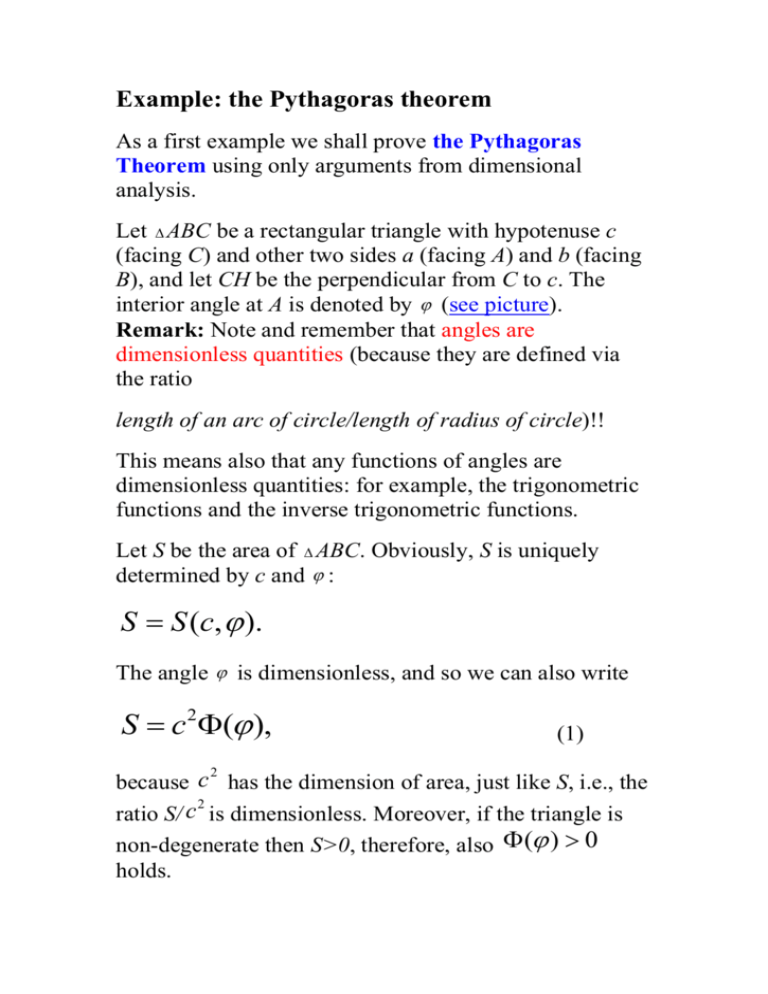
Example: the Pythagoras theorem As a first example we shall prove the Pythagoras Theorem using only arguments from dimensional analysis. Let ABC be a rectangular triangle with hypotenuse c (facing C) and other two sides a (facing A) and b (facing B), and let CH be the perpendicular from C to c. The interior angle at A is denoted by (see picture). Remark: Note and remember that angles are dimensionless quantities (because they are defined via the ratio length of an arc of circle/length of radius of circle)!! This means also that any functions of angles are dimensionless quantities: for example, the trigonometric functions and the inverse trigonometric functions. Let S be the area of ABC. Obviously, S is uniquely determined by c and : S S (c, ). The angle is dimensionless, and so we can also write S c 2( ), 2 (1) because c has the dimension of area, just like S, i.e., the 2 ratio S/ c is dimensionless. Moreover, if the triangle is non-degenerate then S>0, therefore, also ( ) 0 holds. Now consider ACH and CBH. They are both rectangular, too, and are similar to ABC (see the picture). The sum of the areas of these two triangles is equal to S, in other words, using (1) for each of the three triangles gives us c 2( ) a 2( ) b2( ) and after dividing both sides by ( ) 0 we get the proof of the Pythagoras theorem! Examples from population dynamics We will formulate here some simple models for population dynamics in a closed ecosystem. Such models play an important role when it comes to understanding the factors that contributes to increase in population. Let P=P(t) denote the size of the population at time t and P0 denote the size of the population at time t=0. The simplest model is known as Malthus' model and it says that the increase in population is proportional to the size of the population, that is where r is a constant speed of growth. This model predicts that the population will increase exponentially, that is This would lead to a population explosion. Is this model reasonable? As the population grows, the amount of food, living space and natural resources will limit the growth. We should therefore correct Malthus' model with a limiting term. The growth depends not only on the size of the population but also on how far it is from its upper limit. We must correct with a term that makes the growth decrease and becomes zero when we reach this upper limit K. We have thus reached the logistic model (also known as Verhulst's population model) where K is a constant that can be interpreted as the largest amount of individuals that an ecosystem can nourish (the so called carrying capacity). Now we scale this model (see the part of today’s lecture on scaling). We introduce a dimensionless time and a dimensionless population We can now write the logistic equation in these dimensionless variables that is where is dimensionless. This differential equation can for instance be solved by separation of variables We easily realize that that is The constant solution P=K is called attractor and has the property that, independently of the size of the initial population, the size of the population will tend to K as the time goes to infinity.
